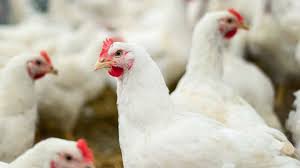A bird flu affects an Iowa layer farm, causing concern as the USDA reports an increase in mammal cases
The Iowa Department of Agriculture and Land Stewardship (IDALS) released a sobering report detailing the outbreak of highly pathogenic avian influenza (HPAI) at a commercial egg-laying farm located in Sioux County. As the first verified case of bird flu in Iowa’s poultry sector this year, the 4.2 million birds on the farm will need to be culled in order to stop the virus from spreading further.
The continued threat posed by HPAI, especially the H5N1 strain, which has been especially active in 2024, is starkly brought to light by this tragedy. Although backyard flocks in Iowa had previously experienced outbreaks, this is the first significant commercial poultry loss of the year, raising questions for the state’s record-breaking egg output in the US.
All state producers of dairy and poultry are being urged by the IDALS to strengthen their biosecurity protocols. The implementation of appropriate disinfection techniques, limiting access to farms for unauthorized individuals, and separating flocks from possible wild bird contact—which is the main way the virus spreads—are some of these precautions.
The alarming development revealed by the Animal and Plant Health Inspection Service (APHIS) of the United States Department of Agriculture aligns with the news from Iowa. In six states, the government verified the discovery of 15 additional cases of H5N1 in animals. Compared to earlier reports, there is a notable rise. Domestic cats, a red fox, and a raccoon have all been detected. There are worries over the possibility of the virus spreading beyond avian populations, even if the precise mode of infection in these mammals is still being looked into.
Mammals that came into touch with sick poultry carcasses while scavenging were the main source of HPAI detections in the past. The current increase in cases, however, raises the possibility that the virus has undergone a mutation or adaption that makes it easier for it to spread to non-avian animals.
APHIS is examining these findings and determining the possible risk to people in close collaboration with state officials in charge of animal health. Health experts are on guard even though there isn’t any proof that H5N1 may transfer quickly from animals to humans at this time.
Given the current HPAI condition, multiple strategies are needed. In the field of agriculture, more stringent biosecurity protocols and increased monitoring are essential for managing epidemics and reducing financial damages. Furthermore, investigation into the latest mammal detections is required to comprehend the virus’s dynamic nature and pinpoint any possible threats to human health.
In order to ensure food safety, consumers can also contribute by buying chicken products from reliable suppliers and handling and cooking them according to label instructions. Together, the public health community, the agriculture sector, and consumers can lessen the effects of HPAI and safeguard the health of both people and animals.



